Shay Boutillier
sbouti64[AT]hotmail.com
Noemi Chacon
nchacon[AT]ivic.ve
I finished a postdoc with the Silver lab in 2004 looking at the effects of labile carbon
on phosphorous availability in tropical soils. I am currently a postdoc in
the Laboratory of Soil Ecology of the Venezuelan Institute of Scientific Research
(IVIC). My lines of investigation are:
- Implications of the biogeochemistry of iron and aluminum for soil phosphorus mobility
in a seasonally flooded forest.
- Effect of disturbance (fire and change of land use) on the biogeochemical cycle of
essential nutrients in tropical humid forests.
Publications
Chacon N., N. Dezzeo, B. Muñoz & JM Rodríguez (2005) Implications of soil organic carbon and the biogeochemistry of iron and aluminum on soil phsophorus distribution in flooded forests of the lower Orinoco river, Venezuela. Biogeochemistry (in press)
Dezzeo N., & N. Chacon (2005) Carbon and nutrient loss in aboveground biomass along a fire induced forest-savanna gradient in the Gran Sabana, southern Venezuela. Forest Ecology and Management. (in press)
Chacon N., N. Dezzeo & S. Flores (2005) effect of particle-size distribution, soil organic carbon content and organo-mineral aluminium complexes on acid phosphatases of seasonally flooded forest soils. Biol Fertil Soils. 41:69-72
Dezzeo N., N. Chacon, E. Sanoja & G. Picón (2004) Changes in soil properties and vegetation characteristics along a forest-savanna gradient in southern Venezuela. Forest Ecology and Management . 200:183-193
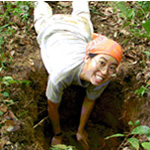 Wendy Chou
wc013[AT]bucknell.edu
Wendy Chou
wc013[AT]bucknell.edu
I was a member of the Silver lab from 2001 until I received my Ph.D. in 2007.
My dissertation research tested the effect of rainfall manipulation (amount and timing)
on ecosystem carbon and nitrogen cycling, especially soil respiration. I conducted my fieldwork
in annual grasslands and wetlands in the Sierra Foothills, at the UC-owned
Sierra Foothill Research
and Extension Center . See my
Research Movie
created by lab member Wendy Yang!
(For best results, save and then open.) I received my B.A. from Harvard University in Environmental
Science and Public Policy (1999), where I did an undergraduate thesis estimating regional fluxes of CO2
in the Amazon basin. In 2008 I began work as a consultant with the California Energy Commission's Public
Interest Energy Research (PIER) Program, identifying important climate change impacts across the state as
well as strategies for adaptation to climate change (visit the
California Climate Change Centerfor more information). I currently live in central Pennsylvania and work at Bucknell University. I am researching four anaerobic bioreactor technologies to convert municipal wastewater into methane for energy use. The wastewater-to-energy (WW2E) project is a partnership between the city of Milton, PA and the Civil and Environmental Engineering Department at Bucknell.
Publications:
Chou, W.W., W.L. Silver, R.D. Jackson, A.W. Thompson, & B. Allen-Diaz (2008).
The sensitivity of annual grassland carbon cycling to the quantity and timing of rainfall. Global Change Biology 14: 1382-1394, doi:10.1111/j.1365-2486.2008.01572.x.
Chou, W.W., S. C. Wofsy, R. C. Harriss, J. C. Lin, C. Gerbig, and G. W.
Sachse (2002).
Net fluxes of CO2 in Amazonia derived from aircraft
observations. Journal of Geophysical Research. Vol. 107, No. D22, 4614,
doi:10.1029/2001JD001295.
link to thesis - coming soon!
Back to
top
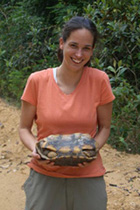 Delphine Farmer
delphine.farmer[AT]colorado.edu
Delphine Farmer
delphine.farmer[AT]colorado.edu
I got my MS from the Silver lab in 2001. I finished my Ph.D. in the
Cohen Group in the Department of Chemistry at UC Berkeley, where I worked on eddy covariance fluxes of reactive nitrogen oxides in the Sierra Nevada.
I'm currently a post-doctoral researcher working with Prof. Jose-Luis Jimenez at the University of Colorado at Boulder with a NOAA Climate and Global Change Fellowship. I study interactions between the biosphere and atmosphere, using novel instrumentation in field studies. I'm interested in how emissions with plants interact with air pollutants, and how these interactions affect local air quality and climate.
 Agata Kamler
agata.kamler[AT]gmail.com
Agata Kamler
agata.kamler[AT]gmail.com
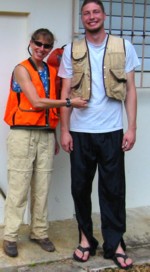 Daniel Keck
dkeck[AT]ucsc.edu
Daniel Keck
dkeck[AT]ucsc.edu
I finished my undergraduate thesis with the Silver lab in 2004. "Patterns in
Reproductive Litterfall Along an Elevation Gradient in a Tropical Forest" uses an elevational
gradient in Puerto Rico to evaluate the potential impacts of climate change on forest reporduction.
My thesis is online at
http://ist-socrates.berkeley.edu/~es196/projects/2004final/Keck.pdf.
I am now a PhD student in Dr. Weixin Cheng's lab at UC Santa Cruz. My research investigates both basic and applied aspects of soil carbon cycling including the effects of grazing and nitrogen deposition. For more information about my research and the Environmental Studies department at UC Santa Cruz follow this link:
http://envs.ucsc.edu/directory/details.php?id=68
Back to
top
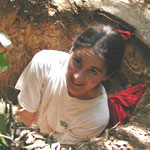 Erika Marin-Spiotta
ems[AT]geog.ucsb.edu
http://www.geography.wisc.edu/faculty/marin-spiotta/
Erika Marin-Spiotta
ems[AT]geog.ucsb.edu
http://www.geography.wisc.edu/faculty/marin-spiotta/
My Ph.D. research examined the importance of biological
and physicochemical mechanisms on carbon (C) storage in
tropical soils. In particular, I studied the role
of soil aggregates and plant litter quality on the
formation of stable soil C across a long-term,
replicated chronosequence of secondary forests
re-growing on abandoned pastures in Puerto Rico. I
used both stable and radiocarbon natural abundance
isotope measurements to estimate the turnover rate of
different physical and chemical fractions of soil
organic matter. This work was in collaboration with
Dr.
Rebecca Ostertag (University of Hawaii), Dr. Margaret
Torn
Lawrence Berkeley
National Laboratory and Dr. Chris Swanston
Lawrence Livermore National
Lab. I received a B.S. in Biology and a Minor in
Political Science (focused on the environmental and
sociopolitical consequences of economic development)
from Stanford University where I spent a considerable
time at
Jasper
Ridge Biological Preserve. After several research
trips to Latin America and a field course with the
Organization for Tropical Studies, I can presently find no better place to
spend my summers and winters than in a tropical forest
and the occasional pasture. My current research
interests span the microscopic scale of surface
chemistry to landscape-level effects of land use change
and include soil microbiology, nutrient cycling in
plants and soils, forest succession, and climate change.
Education:
B.S. Biological Sciences and Minor in Political Science, Stanford University
Ph.D. Candidate, Ecosystem Sciences, Dept. of Environmental Science, Policy and Management, U.C. Berkeley
 Bill G. McDowell
wgmcd[AT]nature.berkeley.edu
Bill G. McDowell
wgmcd[AT]nature.berkeley.edu
Bill is a totally rad and patient Red Sox fan. He was also the technician on the
California grasslands rainfall manipulation project with Wendy Chou. You may know his dad.
Back to
top
Megan McGroddy
mcgroddy[AT]princeton.edu
Becky Ostertag
ostertag[AT]hawaii.edu
I did post-doctoral work with the Silver lab, and am now an Associate Professor at the University of Hawaii
at Hilo. My research addresses questions related to plant responses to resource availability,
tropical forest dynamics, invasive species, and restoration of degraded tropical ecosystems.
See my webpage at
http://www.uhh.hawaii.edu/uhh/faculty/ostertag/
I've also been developing environmental career resources for undergraduate students as part of a NSF CAREER
grant. Check that out at
www.environmentalcareerresources.uhh.hawaii.edu
Rima Shamieh
camljockey[AT]hotmail.com
I began an REU position in the Silver lab in the summer of 2002 that investigated the
effects of land use change on soil carbon dynamics. I looked at the flux of CO2 from soil
carbon pools in a chronosequence gradient of reforestation from active pasture to mature
forest, using Erika's sites in the Cayey Mountains. I graduated with a BS from Berkeley in
Dec 2004 and am now working as a lab tech in Teresa Pawlowska's lab at Cornell University
in Ithaca, New York.
Katherine Smetak
katemsmetak@berkeley.edu
Katherine is working at our Sierra Foothills site (SFREC) on rainfall
increases in annual grasslands and decreased water inputs to spring-fed
wetlands. She completed her master's at the University of
Idaho in 2006 with Dr. Jodi Johnson-Maynard, on the impact
of urbanization on nitrogen cycling and earthworm ecology.
Back to
top
 Yit Arn Teh
yat[AT]st-andrews.ac.uk
http://web.me.com/yitarn/Research_Webpage/home.html
Yit Arn Teh
yat[AT]st-andrews.ac.uk
http://web.me.com/yitarn/Research_Webpage/home.html
I was a postdoc in the Silver Group working in collaboration with Whendee, Prof. Dennis Baldocchi
(University of California, Berkeley) and Dr. Mark Conrad (Lawrence Berkeley National Laboratory)
studying methane, carbon dioxide, and nitrous oxide fluxes in the San Joaquin-Sacramento River
Delta area. My research explores the role of soil microorganisms, redox dynamics, hydrology, and
anthropogenic activity in regulating the flux of trace gases between the terrestrial biosphere and atmosphere. I am especially interested in greenhouse gases and stratospheric ozone-depleting substances as we have an incomplete understanding of the biogeochemistry of these compounds and their global cycles. My research focuses on poorly characterized ecosystems or those underrepresented in global atmospheric budgets. For example, my research on methane biogeochemistry explores upland wet tropical forests and northern Arctic ecosystems, where large uncertainties exist about the magnitude and factors regulating methane flux between the land surface and atmosphere. I also study naturally-occurring, halogenated hydrocarbons active in stratospheric ozone loss, including the methyl halides and chloroform. Large discrepancies in the global budgets of methyl halides indicate that there is a significant “missing source” emanating from the terrestrial biosphere. My research seeks to identify this missing source and characterize the controls on methyl halide cycling.
Publications:
Teh, Y.A. , Silver, W.L., Conrad, M.E. 2005. "Oxygen effects on methane
production and oxidation in humid tropical forest soils."
Global Change Biology, 11,
1283-1297, doi: 10.1111/j.1365-2486.2005.00983.
Teh, Y. A., and Silver, W.L. 2006. "Effects of soil structure destruction on
methane production and carbon partitioning between methanogenic pathways in tropical
rain forest soils."
Journal of Geophysical Research, 111, G01003, 1-8,
doi:10.1029/2005JG000020.
Teh, Y. A., Silver, W.L., Conrad, M.E., Borglin, S.E., and Carlson, C.M. 2006.
"Carbon isotope fractionation by methane-oxidizing bacteria in tropical rain forest soils."
Journal of Geophysical Research, 111, G02001, 1-8, doi:10.1029/2005JG000053.
Rhew, R. C.,
Teh, Y.A., and Abel, T. (2007) "Methyl halide and methane fluxes
in the northern Alaskan coastal tundra."
Journal of Geophysical Research, 112,
G02009, 1-11, doi:10.1029/2006JG000314.
Teh, Y.A., Dubinsky, E.A., Silver, W.L., and Carlson, C.M. 2007. "Suppression of methanogenesis by dissimilatory Fe(III)-reducing bacteria in tropical rain forest soils: implications for ecosystem methane flux."
In review.
Teh, Y.A., Rhew, R.C., Atwood, A.R., and Abel, T. 2007. "Water, temperature, and vegetation regulation of methyl chloride and methyl bromide fluxes from a shortgrass steppe ecosystem."
In review .
Teh, Y.A., Mazeas, O., Rhew, R.C., Von Fisher, J.C., Atwood, A.R., and Abel, T. 2007. "Hydrologic regulation of methyl chloride, methyl bromide, and methane fluxes in Alaskan Arctic tundra."
In preparation.
Teh, Y.A., Silver, W.L., and Scatena, F.N. 2007. "A decade of ecosystem reorganization following multiple hurricanes in a cleared wet tropical forest."
In preparation.
Back to
top
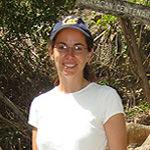 Pamela Templer
ptempler[AT]bu.edu
http://people.bu.edu/ptempler/
Pamela Templer
ptempler[AT]bu.edu
http://people.bu.edu/ptempler/
My research focuses on ecosystem ecology and the influence that
plant-microbial interactions have on nutrient cycling, retention and
loss. My lab is particularly interested in the impacts that human
activities, such as fossil fuel combustion, human-induced climate change
and land use change have on forest ecosystems. We currently examine a
variety of nitrogen sources including rain, snow, fog water and
anthropogenic nitrogen deposition. We explore how plant-microbial
interactions influence nitrogen retention and forest productivity within
natural and managed ecosystems. We currently work in temperate forests
of the northeastern United States, redwood forests of California and
tropical rainforests in Puerto Rico. We focus on three major themes
within plant and ecosystem ecology:
- Impacts of climate change, particularly in the winter months, on
growing season plant nutrient uptake, productivity and trace gas
fluxes in northern forest ecosystems.
- The interaction between plant species composition and ecosystem
nitrogen retention in temperate and tropical forests.
- Effects of land-use change and forest regeneration on nutrient
cycling and retention.
Recent Publications
Templer, PH, WL Silver, J Pett-Ridge, K DeAngelis, and MK Firestone.
2008. Plant and microbial controls on nitrogen retention and loss in a
humid tropical forest. Ecology 89:3030-3040.
Huygens D, P Boeckx, Templer, PH, L Paulino, O Van Cleemput, C Oyarzun,
C Muller and R Goody. 2008. Mechanisms for retention of bioavailable
nitrogen in volcanic rainforest soils. Nature Geoscience 1:543-548.
Templer, PH , MA Arthur, GM Lovett and K Weathers. 2007. Plant and soil
natural abundance ?15N: indicators of relative rates of nitrogen cycling
in temperate forest ecosystems. Oecologia 153:399-406.
Pardo LH, PH Templer, C Goodale, S Duke, P Groffman, MB Adams, P Boeckx,
J Boogs, J Campbell, B Colman, J Compton, B Emmett, P Gundersen, J
Kjonaas, G Lovett, M Mack, A Magill, M Mbila, M Mitchell, G McGee, S
McNulty, K Nadelhoffer, S Ollinger, D Ross, H Rueth, L Rustad, P
Shaberg, S Schiff, P Schleppi, J Spoelstra and W Wessel. 2006. Regional
Assessment of N saturation using foliar ?15N. Biogeochemistry 80:143-171.
Templer, PH. 2005. Tree Species Effects on Nitrogen Cycling and
Retention: a Synthesis of Studies Using 15N Tracers. /In/ Tree
Species Effects on Soils: Implications for Global Change. D. Binkley, O.
Menyailo, eds. NATO Science Series, Kluwer Academic Publishers, Dordrecht.
Templer, PH, G Lovett, K Weathers, S Findlay, and T Dawson. 2005.
Influence of tree species on forest nitrogen retention in the Catskill
Mountains, New York, USA. Ecosystems 8:1-16.
Templer, PH, P Groffman, A Flecker, and A Power. 2005. Land use change
and soil nutrient transformations in the Los Haitises region of the
Dominican Republic. Soil Biology and Biochemistry 37:215-225.
Back to
top
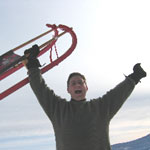 Andy Thompson
Andy Thompson
Andy managed the Silver Lab and coordinated Whendee's research
from 1998-2008. He graduated with a BA in Chemistry from Wesleyan University
in 1992, then worked for Institute of Ecosystem Studies from 1992 -
1997 before coming to UC Berkeley. His research interests involve the
interaction of weather and climate with plant communities, soil nitrogen
cycling, and anything that increases the speed, precision, or
user-friendliness of analytical procedures. Other interests include
characterization of fermentative microbial community behavior through
sensory analysis, as well as modeling the causative factors of dynamic
friction between crystalline water and plastic/steel/wood/wax in the
Sierra Nevada mountains of California.
Bibit Halliday Traut
btraut[AT]ccsf.edu
Bibit received her B.A. in Biology and M.S. in Marine Sciences from the
University of California, Santa Cruz. Her thesis focused on examining
the natural history and feeding ecology of a large herbivorous kelp
forest snail. Bibit then received a M.S. in Botany and Plant Pathology
from Oregon State University where her thesis focused on the effects of
variation in ecosystem carryover on biodiversity and community structure
of forest floor bryophytes and understory vascular plants. In 2003,
Bibit completed her PhD. in Ecology from the University of California,
Davis. Her doctoral work focused on the structure and function of the
high salt marsh ecotone and examined the influences of grazing and
nitrogen addition on community dynamics. Bibit's NPER Fellowship
project will continue to examine the marine/terrestrial transition zone
at Point Reyes National Seashore, but will more specifically examine the
relationship between plant diversity and ecosystem function. In
collaboration with Whendee Silver and Carla D'Antonio at the University
of California, Berkeley, her study will examine the relationship between
plant composition and nitrogen cycling. They will also test the
predictions that resistance to invasion will increase in more diverse
plots, and that in those plots that are invaded (e.g. by a C4 annual
invader) nitrogen retention will be reduced. Coastal transition zones
provide essential ecological functions regulating fluxes of nutrients,
water and organisms. Biological processes in these areas of transition
mediate nitrogen retention and removal. As we are faced with rapid
destruction of these crucial filters, it is imperative to increase our
understanding of the consequences of biodiversity on ecosystem function.
Results from this study will provide important information for the
greater scientific community, as well as managers charged with
conserving and restoring the marine/terrestrial transition zone.
Back to
top
 Samantha Weintraub
sweino[AT]nature.berkeley.edu
Samantha Weintraub
sweino[AT]nature.berkeley.edu
I am interested in the biogeochemical cycling of nutrients, the
organisms involved, and the implications for ecosystem processes.
I seek to explore the interactions among soil, plants, microbes,
and climate, and the flows of energy and materials between the
atmosphere and terrestrial ecosystems.
I graduated from the University of California, Berkeley
with a B.S. in Conservation and Resources Studies.
I conducted various types of ecologically-oriented research as
an undergraduate, including work on agroecology and sustainable
farming practices with Dr. Miguel Altieri and in southern Brazil
(where I lived for 6 months). I also conducted a Senior Honor’s
Thesis in the soil microbial ecology laboratory of Dr.
Mary Firestone, where I examined nitrification processes in
California grassland soils. I was a research technician
in Dr. Whendee Silver’s ecosystem ecology laboratory. I worked
with Ph D candidate Daniela Cusack on a project in the Luquillo
Experimental Forest in Puerto Rico.
We looked at the effects of inorganic nitrogen
deposition on carbon cycling in humid tropical forests.
My future plans include earning a phD in ecology and applying
my in-depth knowledge of ecosystem processes to sustainable
management of the Earth’s diverse natural resources.
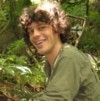 Jonathan Wright
jonathanmichaelwright[AT]gmail.com
Jonathan Wright
jonathanmichaelwright[AT]gmail.com
Jonathan was an undergraduate student at Berkeley working on a B.S. in environmental sciences.
Jonathan wrote his senior thesis with the Silver lab, working in Puerto Rico with Daniela Cusack on long-term
nitrogen deposition plots established by
Bill McDowell from the University of New Hampshire.
His thesis focused on the effects of nitrogen deposition
on soil-atmosphere effluxes of methane and nitrous oxide.
Jonathan's experiences in the Silver Lab should help him figure out
what he he'd like to do after graduating. Though the possibilities are endless, applying to PhD programs in a related field is a distinct possibility.
Back to
top
© 2004-2005 UC Regents
Last modified
 Home ::
People ::
Courses ::
Research::
Links ::
Publications ::
Whendee's Page
Home ::
People ::
Courses ::
Research::
Links ::
Publications ::
Whendee's Page

 Wendy Chou
Wendy Chou Delphine Farmer
Delphine Farmer Erika Marin-Spiotta
Erika Marin-Spiotta Bill G. McDowell
Bill G. McDowell Yit Arn Teh
Yit Arn Teh Pamela Templer
Pamela Templer
 Andy Thompson
Andy Thompson